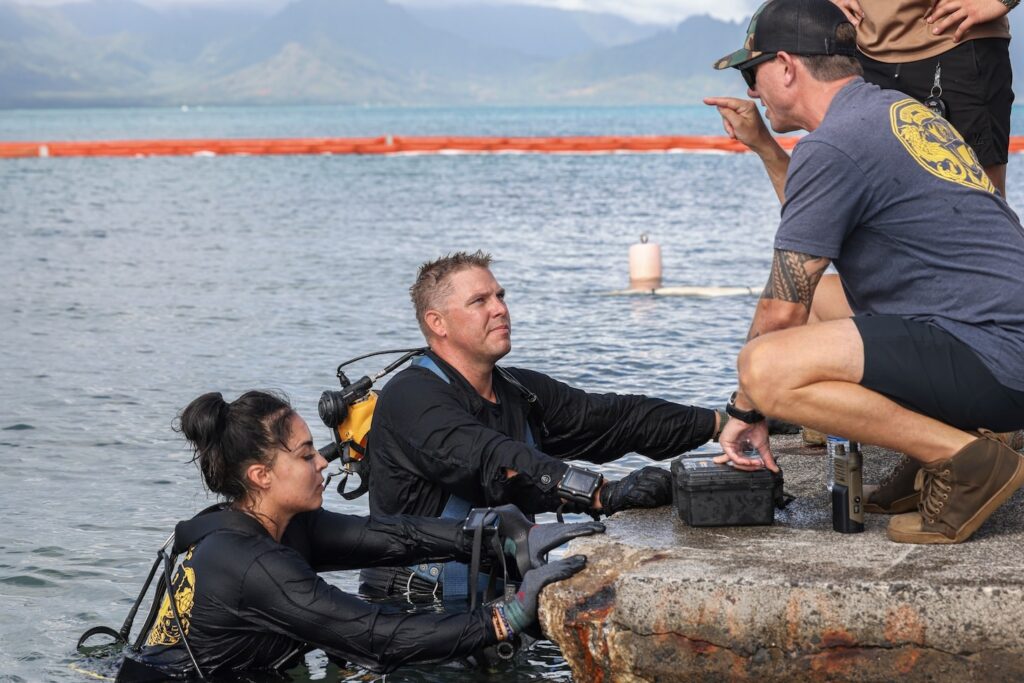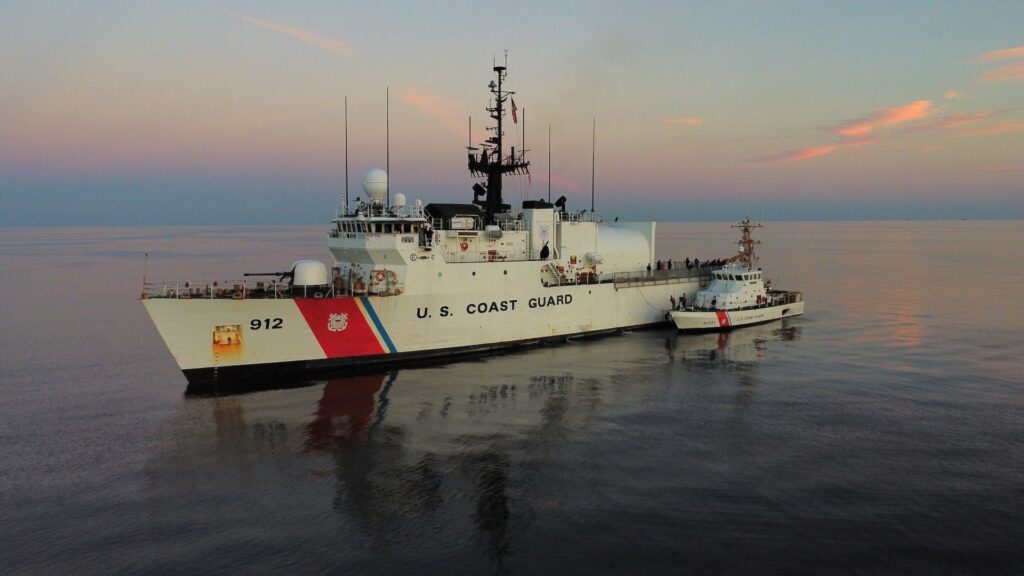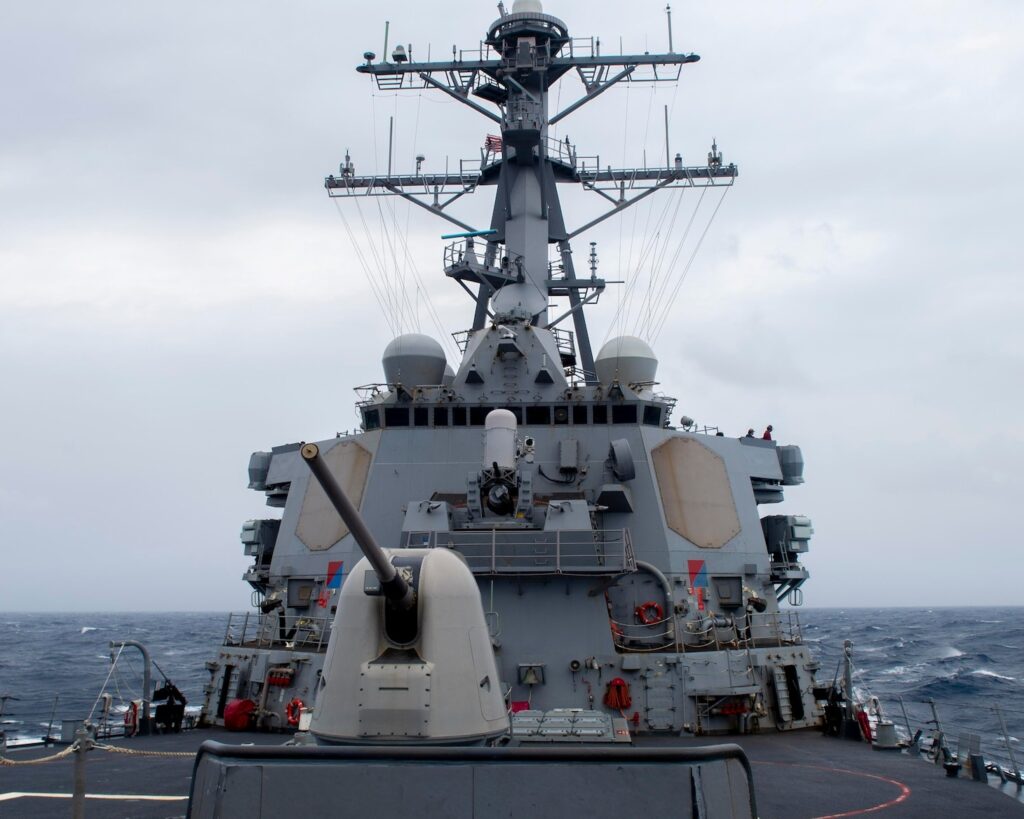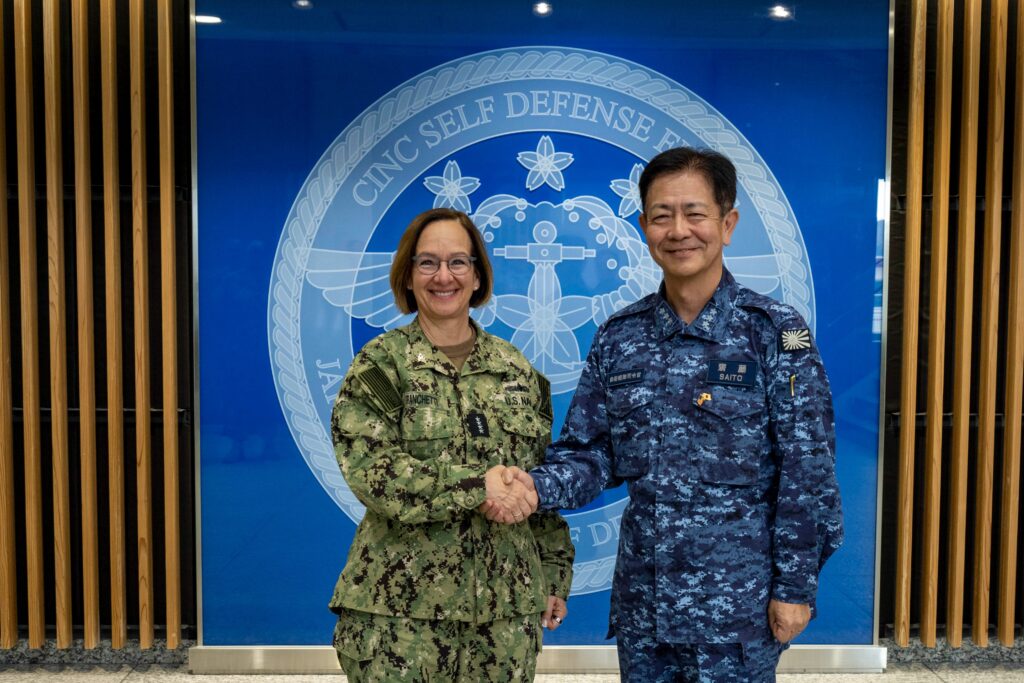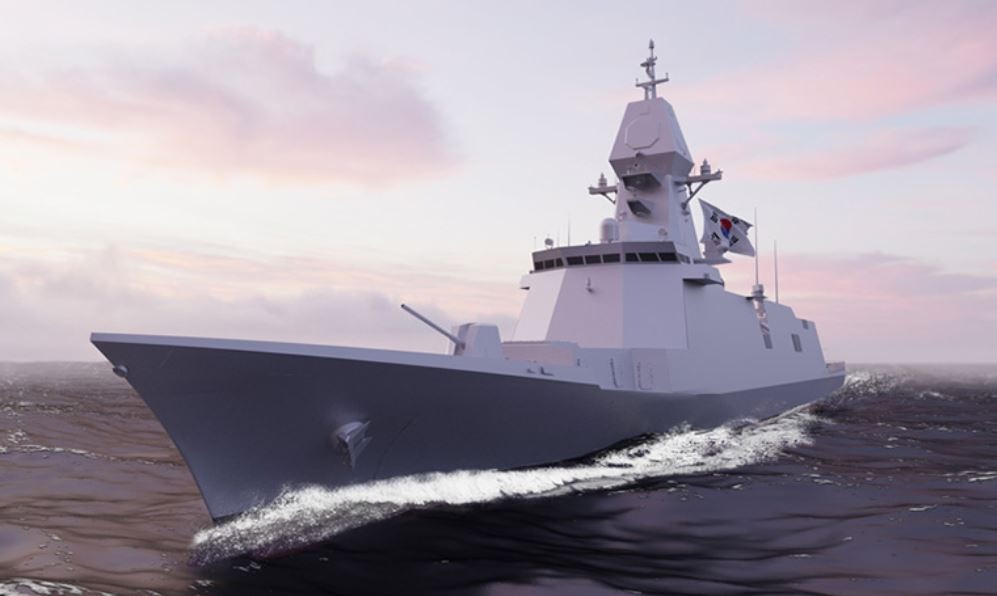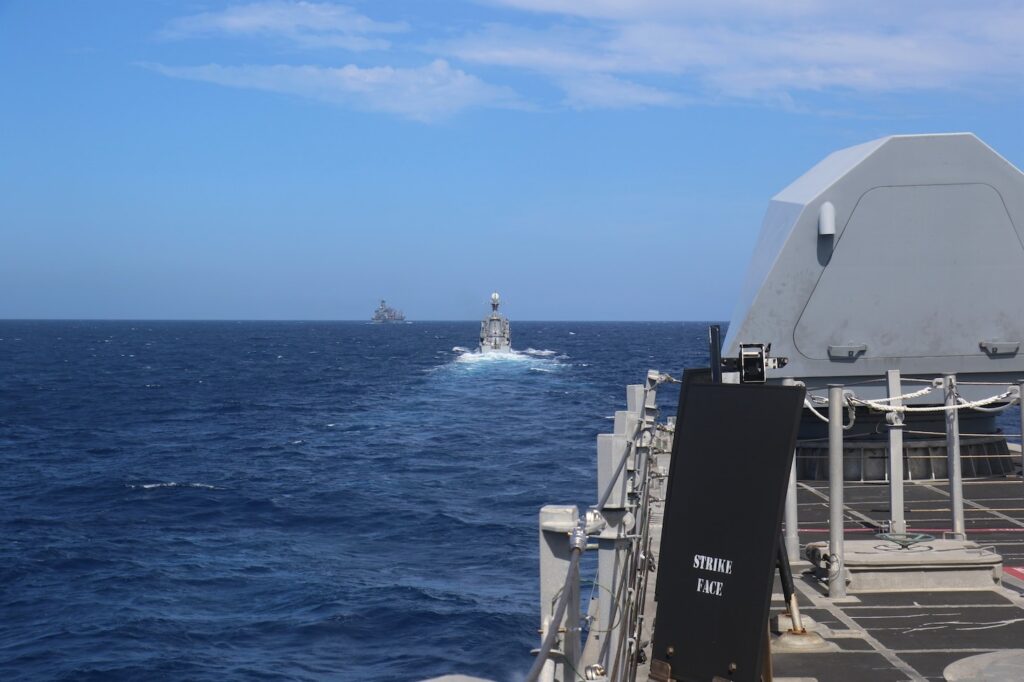Navy Defuels P-8A Poseidon in Kaneohe Bay
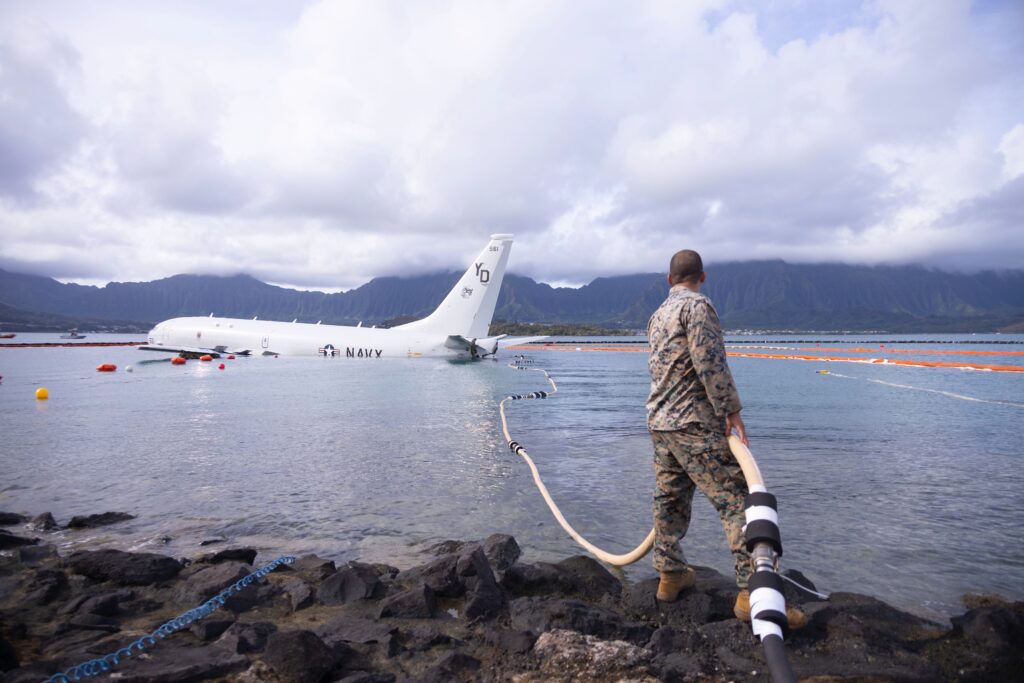
Release from Commander, 3rd Fleet Public Affairs
*****
28 November 2023
KANEOHE BAY, Hawaii —The Navy on Sunday completed a key first step in recovering its P-8A from the bay by removing much of the fuel from the jet aircraft, the on-scene commander told reporters today.
“Yesterday, the team executed a slow and methodical defueling process,” said Rear Adm. Kevin P. Lenox, who is also commander of Carrier Strike Group 3. “This was done to minimize the risk of environmental harm in the follow-on salvage process. We estimated that the aircraft had just over 2,000 gallons of fuel on board andthe team extracted all the fuel that would come out.The process was completed successfully without any fuel being released into the bay.”
To prepare for that process, Navy divers went to Joint Base Pearl Harbor-Hickam to familiarize themselves with the P-8A Poseidonand practice connecting and disconnecting the fuel lines.The divers also conducted a hydrographic survey to better assess the coral and marine environment around the aircraft.
“This team has been singularly focused on developing a salvage plan for this aircraft that prioritizes the safety of personnel and the environment here inKaneohe Bay,” said Lenox.“We tested the fuel today to make sure what came out didn’t have any water in it, and it was basically perfect fuel. We could actually put that in another plane and it would be good to go.”
Col. Jeremy Beaven, commanding officer, Marine Corps Base Hawaii, and Cmdr. Mark Anderson, commanding officer, Mobile Diving and Salvage Unit 1, also addressed the media.
“Within minutes [of the mishap] our Waterfront Operations team was postured and responding to ensure there were no deleterious effects on the environment,” said Beaven. “As the subsequent days have gone, our posture from the initial stages has just improved daily and that’s been in coordination with some of our state agencies helping us to get to what right looks like.
”The on-scene commander also noted an Aviation Mishap Board is on site, and an administrative investigation led by a senior naval officer in the Maritime Patroland Reconnaissance Force from outside the chain of command of the aircraft crew in question, has been designated and began review of investigation materials.
“The Navy is committed to learning from this investigation, regardless of the cause,” said Lenox.“Theselessons be valuable in preventing such incidents going forward and making us better.”
The P-8A crew, assigned to Whidbey Island, Washington-based Patrol Squadron (VP) 4 “Skinny Dragons,” was on a detachment in support of maritime homeland defense. There were nine crewmembers on board –three pilots and six crewmembers (two officer and four enlisted). All crewmembers safely evacuated the aircraft and no injuries were reported. A P-8A and crew assigned to VP-40 “Fighting Marlins” arrived in Hawaii Nov. 22,to assume homeland defense coverage.
More information will be released as it becomes available.
The U.S. Navy fact file on the P-8A Poseidon can be found at the following link: https://www.navy.mil/Resources/Fact-Files/Display-FactFiles/Article/2166300/p-8a-poseidonmultimission-maritime-aircraft-mma/

